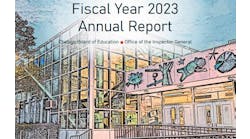FCC provides $1.2 billion to boost student internet access
The Federal Communications Commission has announced that it is committing more than $1.2 billion to help provide broadband internet access to more than 3.6 million students.
The FCC says the funding will support 3,081,131 devices and 774,115 broadband connections for students who, according to their schools, would otherwise lack devices, broadband access, or both.
The first wave of allocations from the FCC’s $7.17 billion Emergency Connectivity Fund Program “will make a major dent in closing one of the cruelest parts of the digital divide,” says Acting FCC Chairwoman Jessica Rosenworcel. ““Closing the Homework Gap means that all students can be connected to their schools and teachers—and now the FCC has new tools to help do just that. “
A total of 3,040 schools, 260 libraries, and 24 consortia applied for support from the program. The $1,203,107,496.88 awarded in the first wave of funding commitments will provide students, school staff and library patrons in all 50 states and Guam, Puerto Rico, and the District of Columbia access to the devices and broadband connectivity they need to support their off-campus education needs. About $1.17 billion will support schools, $23.97 million will go to libraries, and $12.03 million will support consortia of schools and libraries.
The funding is available for the purchase of laptops and tablets, Wi-Fi hotspots, modems, routers, and broadband connections for off-campus use by students, school staff, and library patrons in need, and is available to support off-campus learning, such as homework and virtual learning as schools continue to respond to the Covid-19 pandemic.
Technology monitoring raises privacy concerns
A report from the Center for Democracy & Technology raises concerns that schools’ use of online monitoring software may infringe on student privacy.
The center says that students in wealthier areas tend to have their own personal technology devices, but those in higher-poverty districts are more likely to be using school-issued devices, which are more likely to be subject to monitoring. About 61% of parents surveyed are concerned that this software and data collected could harm students if used or shared in a disciplinary context.
“This research demonstrates how the privacy and security of personal devices is a luxury not all can afford,” said Center President and CEO Alexandra Givens. “Constant online monitoring—especially of students who cannot afford or don’t have access to personal devices—risks creating disparities in the ways student privacy is protected nationwide.”
The research shows that 71% of teachers report the use of monitoring software on school-issued devices, but only 16% of teachers report its use on privately-owned personal devices,
The research was compiled based on surveys of students, parents, and teachers and was combined with in-depth interviews with school district staff.
The center says monitoring software can permit school staff to remotely view students’ computer screens, open applications, block sites, scan student communications, and view browsing histories. In some cases, security flaws have permitted school personnel to access students’ cameras and microphones without students’ permission or awareness.
The findings indicate that a majority of students say they do not share their true thoughts online because they know they are being monitored. The findings additionally included concerns from parents and teachers that monitoring could have unintended consequences like “outing” LGBTQ+ students.
The center is asking Congress to address the issue by updating the Children’s Internet Protection Act (CIPA) to clarify that CIPA “does not require broad, invasive, and constant surveillance of students’ lives online.”


